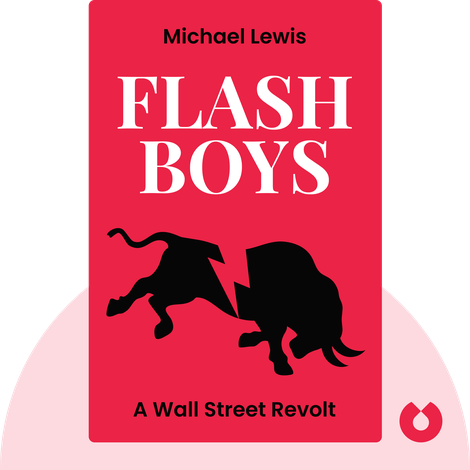
The Milliseconds Market: The Money-Making on High-Frequency Trading
High-Frequency Trading (HFT) is a financial phenomenon where algorithms and ultra-fast computers dominate the market, executing trades at blistering speeds—measured in microseconds. Imagine millions of trades happening in the blink of an eye, each targeting minute price gaps that often escape human notice. These trades can generate small profits per transaction, but when scaled up, they translate into enormous financial gains.
At its core, HFT revolves around precision, speed, and scale. Firms invest heavily in technology to gain an edge—placing their servers next to exchange computers to reduce latency by just a few microseconds. This race for speed often determines who profits and who doesn’t. The faster you act, the more likely you are to capitalize on fleeting opportunities.
Source: www.blinkist.com
How Does HFT Work?
HFT firms rely on highly sophisticated strategies. At a basic level, these systems exploit inefficiencies—small discrepancies in asset prices across exchanges or predictable order flow patterns. The computers are designed to act instantly and automatically, requiring no human intervention beyond the initial programming.
For instance, if one exchange lists a stock for $50.01 while another lists it at $50.00, the algorithm instantly buys from the cheaper source and sells to the higher one, pocketing the one-cent difference. On its own, this profit seems trivial, but when repeated millions of times daily, it becomes extremely lucrative.
HFT firms also act as modern-day market makers. By placing countless buy and sell orders, they help ensure there’s always someone to trade with. In essence, they keep the gears of the financial market turning, providing the liquidity necessary for smooth operations.
Source: www.niceactimize.com
Why Does HFT Matter?
The supporters of HFT emphasize its critical role in financial markets. For one, it injects substantial liquidity. If you’ve ever traded shares and found a willing buyer or seller almost immediately, you likely have HFT firms to thank. Their presence narrows the difference between bid and ask prices, reducing costs for other market participants. Smaller spreads mean mutual funds, pension funds, and retail investors can execute trades at fairer prices.
Moreover, HFT improves market efficiency. Stock prices adjust almost instantaneously to reflect current information, leaving little room for discrepancies or mispricing. In other words, the market reflects fair value much faster—something that would otherwise take much longer without automated systems.
However, critics argue that the story isn’t all positive.
The Darker Side of HFT
Despite its benefits, high-frequency trading comes with considerable risks and controversies. One significant concern is market manipulation. Practices like "spoofing," where traders place fake orders to influence prices and then cancel them, distort market behavior. Although illegal, such strategies can occur undetected in the split-second world of HFT.
Another issue is fairness. HFT firms have access to cutting-edge technology and data that regular investors simply cannot compete with. Retail traders, operating seconds or minutes behind, find themselves at a perpetual disadvantage. Critics liken it to a rigged race—where HFT firms always start with a head start.
The infamous Flash Crash of May 6, 2010 highlights another danger: volatility. On that day, the Dow Jones plunged nearly 1,000 points within minutes before recovering. HFT algorithms, programmed to react to price movements, triggered a cascade of sell-offs that overwhelmed the market’s systems. Events like these reveal how the very speed that powers HFT can also destabilize the market in times of stress.
Finally, reliance on technology means that a glitch can have catastrophic consequences. Take Knight Capital, for example. In 2012, a software malfunction caused the firm to lose $440 million in just 45 minutes—a stark reminder of how fragile these automated systems can be.
Source: www.inc.com
The Ethical Debate
Is HFT good or bad for the market? The answer lies in how it is used. At its best, HFT enhances liquidity, reduces costs, and keeps markets running efficiently. At its worst, it amplifies volatility, disadvantages small investors, and opens doors for unethical manipulation. The challenge for regulators is finding the right balance—allowing innovation to thrive while implementing safeguards to prevent misuse.
Efforts like circuit breakers, which pause trading during extreme volatility, are a step in the right direction. Similarly, tighter monitoring of trading activity can help identify and prevent manipulative practices. Transparency and fairness must remain top priorities.
Final Thoughts
The milliseconds market is both fascinating and controversial. High-frequency trading has transformed the financial landscape, enabling unprecedented speed, efficiency, and profit potential. Yet, it has also exposed cracks in the system—unfair advantages, unpredictable volatility, and ethical concerns that cannot be ignored.
In a world where milliseconds matter, the debate over HFT’s role in financial markets will continue. The challenge is ensuring that technological innovation benefits everyone, not just a select few with the fastest systems. Balancing speed with stability and fairness will define the future of high-frequency trading.
